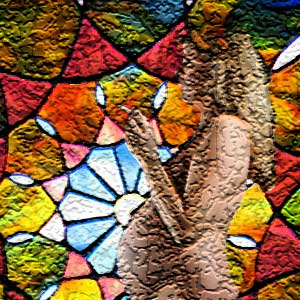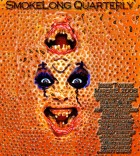Discuss the process that “Shrapnel” went through to go from idea to this wonderful finished piece.
“Shrapnel” began as two sentences of summarized flashback within another story, which I showed to poet and fiction writer Nance Van Winckel—my adviser in the Vermont College MFA program at the time. She tore that story apart in a way that was utterly honest, neutral, and exciting. In fact, Nance didn’t just challenge the story/chapter; she asked if perhaps my book actually wanted to be a memoir instead of a novel. The result: my desire to rethink the piece—even the genre—overtook my initial distress at facing the truth (the sign of having an excellent teacher). She wrote: “Oh my god, when I got to that tiny sentence about the shrapnel, I said, Holy shit, now here’s the story. For my $$$, the whole story could very well sit on this.” However, I had never witnessed the real-life shrapnel scenes—only heard about them. Rewriting in-scene and placing myself in the room amounted to a lie, a stronger story and a greater truth than truth could tell. I wish I had been there. By writing myself into that scene, I wrote myself into one more day of my father’s short life. Meanwhile, I decided to let the book have its way and become a memoir titled The Suitcase Files. Every day I still question the label “memoir,” because I question notions of memory, perspective and truth.
The shrapnel—”pushing against the barrier of [the father’s] skin from the inside”—emerges as a strong, complex image throughout. What role do such images take on in this piece?—and your work in general?
Once I allowed the shrapnel image to generate its own story, the inherent metaphor revealed multiple layers of plot and provided its own structure and emotional weight. In The Suitcase Files, I’m learning to let significant imagery drive the narrative, much as I do when writing a poem.
Although I’m as manly as they get, at the end of reading this story, I ended up in tears. How do you get a piece to build to a moment of such haunting and powerful emotional resonance?
I have no idea. It’s hard to know if a piece will touch another being. Sometimes, in the process of writing a certain passage, I experience what I’m writing about so strongly that I begin to cry—that tells me I’m onto something, that I’m in dangerous and fruitful territory.
You are also a very accomplished poet. How does your poetry inform your fiction—and vice versa?
Thank you… Regarding fiction, I have written very little; most of my prose falls into the creative non-fiction category. Nevertheless, the lyric sensibility constantly pushes up out of my prose. As a reader, the work that excites me most proves hard to define, work that—if heard and not read—you might not guess its designated genre.
You recently graduated from the MFA program in Vermont. Now what?
I’m teaching multi-genre workshops called Writing Inside Out, including an “embodied writing” workshop in which I integrate practice in movement and writing (I’m also a dancer/performer). After finishing Totem, a first collection of poetry, and a critical study titled I Am the Arrow: Transcendent Narrative Arc in Plath’s Original Ariel, I would love to contribute to the larger conversation by publishing both. Most of all, I want time to write.



 The SmokeLong Grand Micro Contest (The Mikey) is now an annual competition celebrating and compensating the best micro fiction and nonfiction online.
The SmokeLong Grand Micro Contest (The Mikey) is now an annual competition celebrating and compensating the best micro fiction and nonfiction online.